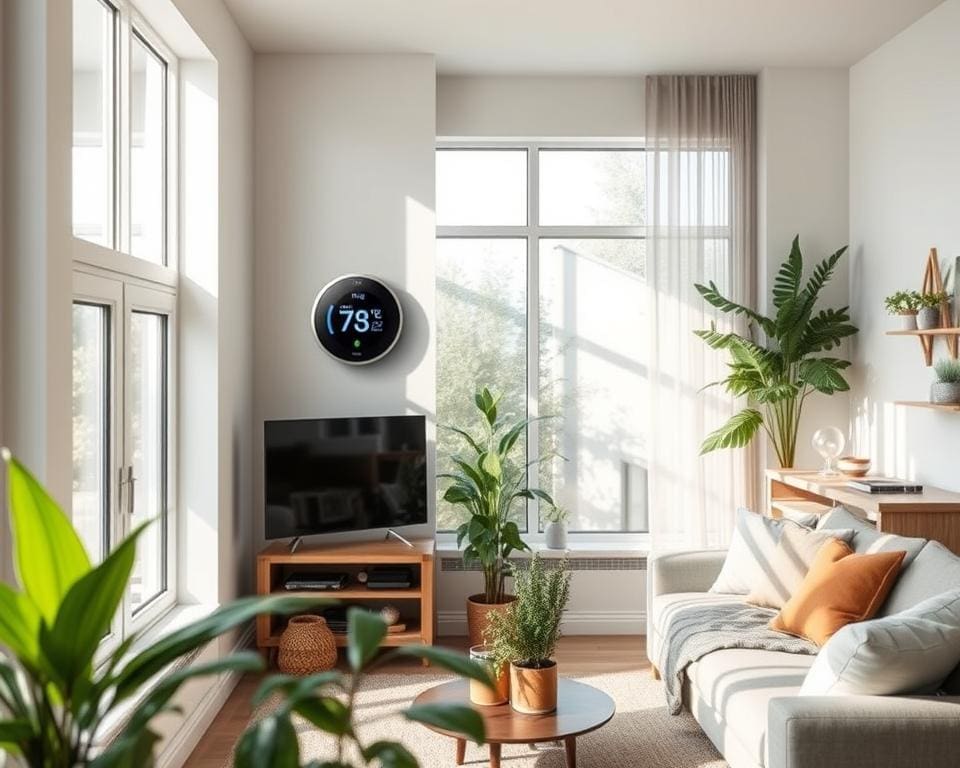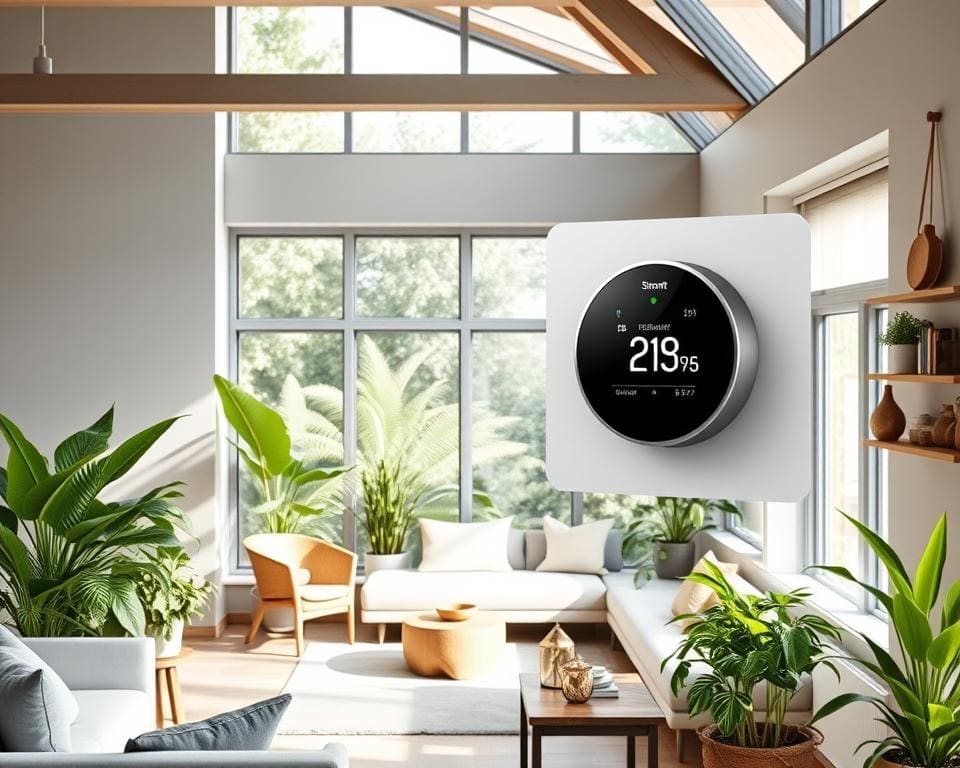In an era where energy efficiency is paramount, smart thermostats have emerged as a pivotal advancement in household energy management. With the ability to precisely control heating and cooling systems through intuitive smartphone applications or voice commands, these innovative devices not only enhance comfort but also contribute significantly to lowering energy bills. Studies suggest that utilising smart thermostats can lead to an astonishing reduction in energy usage by approximately 10-15%. This section delves into the transformative role of smart thermostats as essential components of eco-friendly temperature control, showcasing their potential in fostering sustainable living practices and integrating efficiency into daily routines.
Understanding Smart Thermostats
Smart Thermostats represent a significant advancement in home climate control, offering a level of convenience and efficiency that surpasses traditional options. These innovative devices are designed to manage heating and cooling systems in ways that align closely with homeowners’ lifestyles, ultimately leading to energy savings and improved comfort.
What is a Smart Thermostat?
A Smart Thermostat is a sophisticated digital device that simplifies the management of a home’s heating and cooling functions. Unlike basic models, these thermostats provide users with the ability to customise temperature settings, enabling control over their environment. Through features such as programmable schedules and remote access, Smart Thermostats adjust to the homeowner’s habits and preferences, ensuring optimal comfort throughout the day.
How Do Smart Thermostats Work?
Smart Thermostats operate using advanced sensors and algorithms, which analyse data on occupancy and temperature preferences. This analysis allows the devices to make automatic adjustments in real time, ensuring that energy consumption remains efficient. By learning patterns over time, these thermostats can enhance energy savings while providing users with intuitive control over their Thermostat Control Systems. Key elements such as Programmable Thermostat Features facilitate the ability to set heating or cooling schedules, adding an extra layer of automation to home climate management.

Smart Thermostats: Saving Energy at Your Home
Smart Thermostats revolutionise the way we manage our home heating systems. The benefits they provide are significant, especially concerning home energy efficiency. By providing precise control over your heating, these devices allow for more efficient energy usage, which translates into notable savings on energy bills.
Benefits of Using Smart Thermostats for Home Energy Efficiency
Energy Saving Smart Thermostats offer a range of advantages that enhance overall home energy efficiency:
- Adaptive Scheduling: Program your thermostat to adapt to your living patterns, ensuring heating only occurs when required.
- Usage Reports: Gain insights into energy consumption, enabling informed decision-making about when and how to heat your home.
- Remote Control: Monitor and adjust your home’s temperature from anywhere, preventing unnecessary energy expenditure.
- Alerts: Receive notifications about energy usage spikes or maintenance reminders, helping to stay ahead of potential issues.
Comparing Smart Thermostats with Traditional Thermostat Control Systems
When placed next to traditional thermostat control systems, Smart Thermostats stand out in their functionality:
- Precision: Smart Thermostats allow for more accurate temperature settings compared to manual options.
- Flexibility: Remote access features let you manage your home’s heating from your smartphone or tablet.
- Energy Management: Many Smart Thermostats learn your preferences and adjust accordingly, providing ongoing optimisation for home energy efficiency.
- Integration: Easy compatibility with other smart home devices enhances the efficiency of your entire home environment.
Energy Saving Smart Thermostats: Features to Look For
When considering Energy Saving Smart Thermostats, it is essential to identify features that enhance their energy efficiency and overall user experience. A variety of Programmable Thermostat Features can significantly optimise your heating and cooling systems, ultimately leading to reduced energy consumption.
Key Programmable Thermostat Features
One of the primary advantages of smart thermostats is their programmable capabilities. Some key features to look for include:
- Custom scheduling to set heating and cooling based on daily routines.
- Adaptive learning that understands your habits over time.
- Geofencing technology that adjusts temperatures based on your location.
Remote Access and Control Options
Being able to control your home environment remotely adds another layer of convenience. Look for thermostats that offer:
- Mobile app connectivity for heating adjustments from anywhere.
- Real-time alerts for temperature changes or maintenance needs.
- Voice control compatibility with smart voice assistants.
Integration with Smart Home Technology
Seamless integration with existing Smart Home Technology expands the functionality of your smart thermostat. Features to consider include:
- Compatibility with smart lighting and other appliances for enhanced energy management.
- Data sharing with home security systems for comprehensive energy monitoring.
- Cloud-based updates that ensure your system stays current with the latest features.
Eco-Friendly Temperature Control and Sustainable Climate Control
Adopting eco-friendly temperature control solutions significantly benefits not only individual households but also the planet. The integration of smart heating technology allows homeowners to manage their energy usage more effectively. This approach facilitates sustainable climate control, supporting a cleaner environment.
Reducing Your Carbon Footprint with Smart Heating Technology
Smart heating technology enables users to refine their heating practices, ultimately lowering energy consumption. These advanced systems monitor various factors such as weather fluctuations and occupancy levels, resulting in optimal energy use. As a result, households can *dramatically* reduce their carbon footprints while enjoying enhanced comfort.
Energy-Efficient Home Heating Strategies
Implementing energy-efficient home heating strategies is crucial for achieving eco-friendly temperature control. Here are some effective methods:
- Utilise programmable thermostats to automatically adjust temperature settings based on daily routines.
- Maintain a well-insulated home to minimise heat loss.
- Take advantage of zoned heating systems to heat only occupied spaces.
- Regularly service heating systems to ensure optimal efficiency.
Choosing the Right Smart Thermostat for Your Home
When selecting a smart thermostat, it is vital to evaluate its compatibility with your existing HVAC system. Not all smart thermostats cater to every household setup, so understanding your system’s specifications is key to reaping the full benefits of energy-efficient home heating. Look for devices that not only fit your setup but also offer a user-friendly interface, making it easier to programme and adjust settings as needed.
Another consideration is whether you prioritise energy efficiency or smart home integration. Smart thermostat benefits extend beyond basic temperature regulation; they connect seamlessly with other smart devices, enhancing your home’s overall energy management. The ability to monitor and adjust your thermostat remotely adds another layer of convenience, allowing for optimal energy conservation while you’re away.
Finally, opting for trustworthy brands that provide reliable customer support and regular software updates can greatly improve the longevity of your investment. Look for established names in the industry that are known for their innovations and commitment to enhancing functionality. By making an informed choice, you can significantly impact not just your energy consumption but also the comfort and convenience of your living space.









